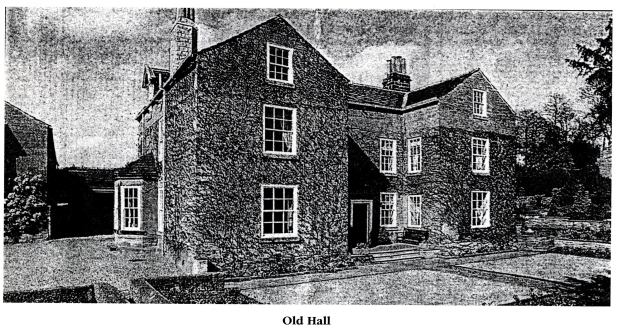The Grand Houses of Bramham (cont)
Tenter Hill Lodge, now Carlton House
In early Victorian times Miss Mary Ann Bownas, daughter of former Vicar Robert Bownas, ran a College for Young Ladies in this house.
Prospect House
On High Street, has records which show its owners since 1812. A cottage at the back was at some stage incorporated into the house. In recent times Mr Kendrew ran a local business from the house during the Second World War; his sister was known to kill pigs in the cellars!
The Old Vicarage
Dates from 1678, its grounds stretching round half the churchyard. Originally considerably larger even than today, it was partly demolished for practical purposes. During the 1960's a new vicarage was built in the grounds, with the older building sold into private hands. Earlier a "Village Institute", now a private bungalow near the Village Hall, was built in the original Vicarage grounds by a former Vicar's wife, Mrs Wadeson, to enable villagers to have a bath there for a few pence.

Bramham Old Hall
The Old Hall is one of the oldest houses in the area, whose central part is thought to date from the Stuart period. (The date 1681 appears over a door lintel.) The inclusion of the 'Old' in its name came about to avoid confusion with Bramham Hall, the name given to Bowcliffe Hall by the Lane Fox family during their residence there.
The Old Hall has had a number of extensions, one wing certainly being Victorian. Probably the home of the early Lords of the Manor, the house has a cobbled courtyard which is thought to have been the marching square where the Lord of the Manor exercised his own small body of armed men. In late Victorian times, the then owner, the Rt Hon John Lloyd Wharton, MP for Ripon, gave the Church Lychgate in memory of his wife.
Later, Mr Hardcastle was well known for the collection of clocks he kept there. More recent residents have been a Mr Bowman, Col and Mrs Whittingham, and the property developer Mr Tony Clegg and his family. An interesting feature is the garden folly, with flag-mast; this building, which appears to be a ruined medieval tower, is in fact of later nineteenth century construction, containing a three-seater earth closet, the third at child's level.
Oglethorpe Hall
Now only visible in an old archway close to more modern farm buildings, this was the seat of an ancient family which flourished from before the Norman Conquest until the time of Cromwell, well over 600 years. The parish's full name, Bramham-cum-Oglethorpe, testifies to their importance.
At the time of the Conquest the Oglethorpe of the day held the prestigious position of Reeve (Steward or Magistrate) of the County. A descendant, Owen Oglethorpe, Bishop of Carlisle, born at Oglethorpe Hall, was present at the burning of Latimer and Ridley, survived the turbulance of Henry VIII's reign, and crowned the first Queen Elizabeth on 15 January, 1559.
He is buried at St Dunstan's in Fleet Street, London. Queen Elizabeth visited Oglethorpe in 1572; her signature is on an old commentary held at Newton Kyme Rectory. It was Bishop Oglethorpe who founded Tadcaster Grammar School in 1556-7. Eventually the family's royal connections told against it, when Cromwell's Parliament confiscated all its estates, giving them to the Fairfax family. Much later they were sold to Lord Bingley.
Headley Hall
Originally built by Bishop Oglethorpe during the sixteenth century, Headley Hall came into the hands of the Winn family, one of whom was raised in 1797 to an Irish peerage as Lord Headley, Baron Allanson and Winn. The house and lands continued in private ownership until 1903 when they were bought by the Bramham Park Estates.
They in turn leased, in the late 1940's, and later sold then to the University of Leeds as the farm for its Department of Agriculture.
Bramham Biggin
Having been in medieval times the site of the Nostell Priory monks' cell, the Biggin housed members of a variety of famous families - D'Arcy, Gascoigne, Fairfax, Goodrick - but notably became the home of Charles Allanson, MP for Ripon. In turn he was succeeded by his relatives, the Winn family, one of whom, Sir George Winn, became Lord Headley in 1797.
In the mid-nineteenth century the Biggin was leased and much-extended as Bramham College, remaining within the Bramham Park Estate when the College was dismantled shortly after 1900.
|
